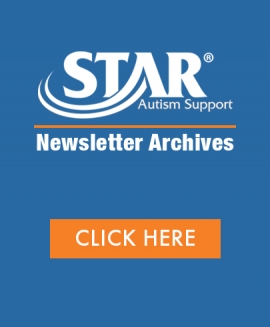Make Routines Your Superpower!
Make Routines Your Superpower!

Teachers are perhaps the closest thing we have to real life superheroes—and their superpower? Routines!
Routines can teach skills in context, provide multiple opportunities for students to practice newly acquired skills, and help students generalize skills learned in school to both home and community settings. Want to make routines your superpower?
Try these simple ways to incorporate more skill generalization into everyday routines:
Make routines consistent and engaging
Routines should be organized, structured, and predictable throughout the day. If you’re not certain of what should happen, your students will also be uncertain.
Create both daily and weekly schedules based on the routines that you’ve established during the day. Intentionally plan for routines throughout your week. The STAR Media Center’s E-Scheduler features templates and examples of schedules, including staff descriptions and details.
To allow for consistency among staff members, make sure you’re specific in your descriptions and guidelines. For example, in the following transition routine step, precise scripting is provided to maintain consistency: “During arrival, staff A will help student 1, 3, and 5 off the bus and say, ‘Walk with me’ as they walk toward the classroom.”
In addition to scheduling everyday classroom routines (i.e. Arrival, Lunch, P.E., etc.), plan for weekly community routine simulations. Weekly practice will prepare students for upcoming routines in the community. It also gives you a fun opportunity to gather data and target future instruction.
Focus on independence
Routines allow students to learn new skills by providing predictable steps to follow. This predictability creates frequent opportunities to master those skills.
Create visuals or use STAR’s Routine Essentials visual supports as prompts during routines. Students can carry visuals with them when adults are not present, boosting their independence even more. Also, visual supports are easier to fade than verbal prompting.
Reduce cues and prompts as students gain independence. Some students will need instructional modeling; however, it’s important to fade this over time from “I do” to “You do,” and eventually to no prompt at all. In the beginning, allow the student to try the routine and gather baseline data prior to putting the most restrictive prompts in place.
Practice community and vocational routines by creating classroom simulations before going into the community. The more times you practice a routine with students, the more opportunities you’re offering your students to gain independence. Perhaps the greatest superpower of routines is their potential to help students have fun in both community and school activities.
This Links “Playing a Game” routine booklet is the perfect way to generalize social and play skills taught during Discrete Trial (DT), Pivotal Response Training (PRT), and other small group instructions.
Make sure to include opportunities to problem-solve and socialize in your routines
If you’ve ever watched a student fall apart when things don’t go as planned, you know the power of predictability for students. However, the world is not always predictable. Some problem-solving situations will naturally arise, but if they don’t . . . create opportunities for students to ask for help, solve a problem, or finish the routine in a different way.
Plan for communication and socialization! Teach students appropriate times and ways to socialize with others through routines by adding steps dedicated to socializing with others.
When needed, use token boards during routines to reduce challenging behavior and increase motivation. This may come in handy during difficult tasks of problem-solving and socialization.
Select routines intentionally
When selecting routines, choose ones that will increase generalization of skills you are teaching. For example: if you are teaching money skills, incorporate the routine of shopping at a classroom store.
Review routine data frequently and adjust. After considering the data, add Discrete Trial (DT) lessons, Pivotal Response (PRT) instruction, and additional custom routines to help students be independent.
Routines are the most rewarding and powerful measure of progress for your students. Nothing is better than watching a student join peers during lunch, walk across the stage at graduation, or purchase items at the store independently without any assistance. It may look effortless, but these are the results of our superhero educators using the power of routines. For your own visual prompt to help you remember the power of routines, check out this free poster.

